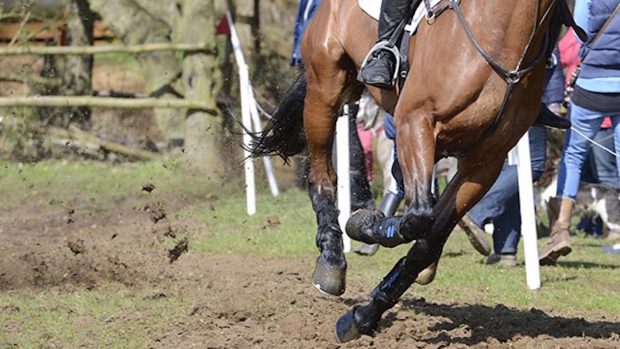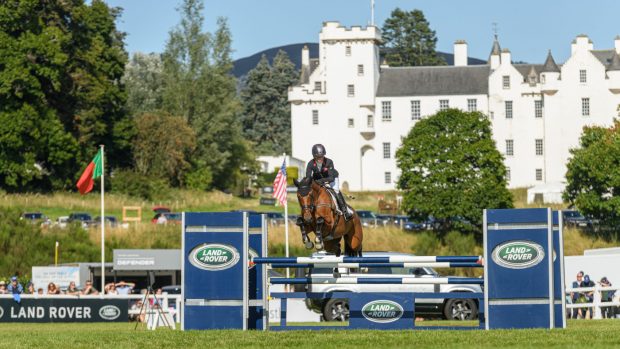How are eventing penalties allotted? Here is Horse & Hound’s essential guide to help you understand how horse trials are scored…
The basics of eventing penalties
Eventing has three phases. The dressage is always the first phase. At one-day events, the showjumping normally comes next, followed by cross-country, although at some international events the showjumping is the final phase, after cross-country. At three-day events, the showjumping is always the final phase.
The aim is to finish on the fewest possible penalties; the lowest score wins.
Where it starts: eventing dressage scoring
The competition starts with the dressage, where a judge or judges mark each pair. The individual marks for each movement are converted into a penalty score. No one ever scores zero in the dressage – a mark below 20 would be considered exceptionally good and marks between 20 and 30 are generally competitive, depending on the level of competition, the field and the conditions.
It is possible to score zero in both the showjumping and cross-country phases; if a rider scores zero in both jumping phases, this is known as “finishing on your dressage score” or “keeping a clean sheet”.
Most common eventing penalties in jumping phases
If a horse and rider clear all the obstacles in the showjumping in the right order at the first attempt and finish within the time allowed, they will avoid any penalties in this phase.
The most common penalties that riders pick up in the showjumping phase are:
- four penalties for each fence down
- four penalties for first disobedience (such as a refusal, run-out or circle)
- eight penalties for second disobedience anywhere on course (in national competitions; in international competitions, the second disobedience results in elimination)
- elimination for third disobedience anywhere on course
- elimination for a fall
- one penalty for every commenced second over time allowed
Similarly to the showjumping, a horse and rider who clear all the obstacles on the cross-country in the right order at the first attempt and finish within the optimum time will avoid any penalties in this phase.
The most common penalties that riders pick up in the cross-country phase are:
- 20 penalties for first refusal, run-out or circle at obstacle
- 40 penalties for second refusal, run-out or circle at same fence
- elimination for third cumulative refusal, run-out or circle at novice or above (and in all FEI competitions) or fourth cumulative refusal below novice level
- elimination for third refusal, run-out or circle at same obstacle
- elimination for a fall
- 0.4 of a penalty for every commenced second over the optimum time
- 0.4 of a penalty for every commenced second in excess of 15 seconds under the optimum time
Note that circling anywhere on the showjumping course will be penalised as a disobedience, but circling between obstacles is permitted on the cross-country.
A circle only results in penalties across country if it happens between elements of a combination which are numbered as one fence using a, b, c and so on. If the obstacles are separately numbered, circling is allowed between them without penalties, although a rider will be penalised if he is deemed to have presented his horse at a fence and the horse avoids jumping it.
Eventing penalties in national and international competitions
Eventing is administrated at both national and international level. In Britain, national classes come under the auspices of British Eventing (BE) while all international classes worldwide are run under FEI rules. Broadly speaking, scoring is done in the same way under both BE and FEI rules, but there are a few differences, such as the fact a second refusal in the showjumping is penalised with elimination at FEI events, as detailed above.
There are also no penalties for breaking a frangible device across country in BE competitions, but 11 penalties are given in FEI events for activating a frangible device where the dimension of the fence is modified.
In FEI competitions, horses receive 15 penalties for missing a flag across country, while in BE events, there are no such penalties – if a horse is judged to have missed a flag, it has effectively run-out and needs to be re-presented to the fence, carrying 20 penalties. If the rider continues on course without re-presenting, the combination will be eliminated.
Eventing penalties in team competitions
Most eventing team competitions are for teams of three or four, with the best three scores in each team to count. The total penalties from each of the three combinations are added together to give the team score, with the team with the fewest penalties winning.
The Olympics
The Tokyo Olympics in 2021 ran with a three-to-a-team and all to count format. The 2024 Olympic eventing format used in Paris will be the same. Teams consist of three combinations and a reserve, who may be called into the team as a substitute, and riders and horses are allowed to continue the competition in some cases which would normally result in elimination.
You might also be interested in:
If you're new to eventing, we have demystified the levels available both in the UK and internationally ahead of this

Horse & Hound’s essential guide to eventing dressage scoring

Horse & Hound’s useful guide to eventing’s levels in Britain

The Olympic eventing format – all your questions about penalties and substitutions answered

Subscribe to Horse & Hound this spring for great savings
Horse & Hound magazine, out every Thursday, is packed with all the latest news and reports, as well as interviews, specials, nostalgia, vet and training advice. Find how you can enjoy the magazine delivered to your door every week, plus options to upgrade your subscription to access our online service that brings you breaking news and reports as well as other benefits.




